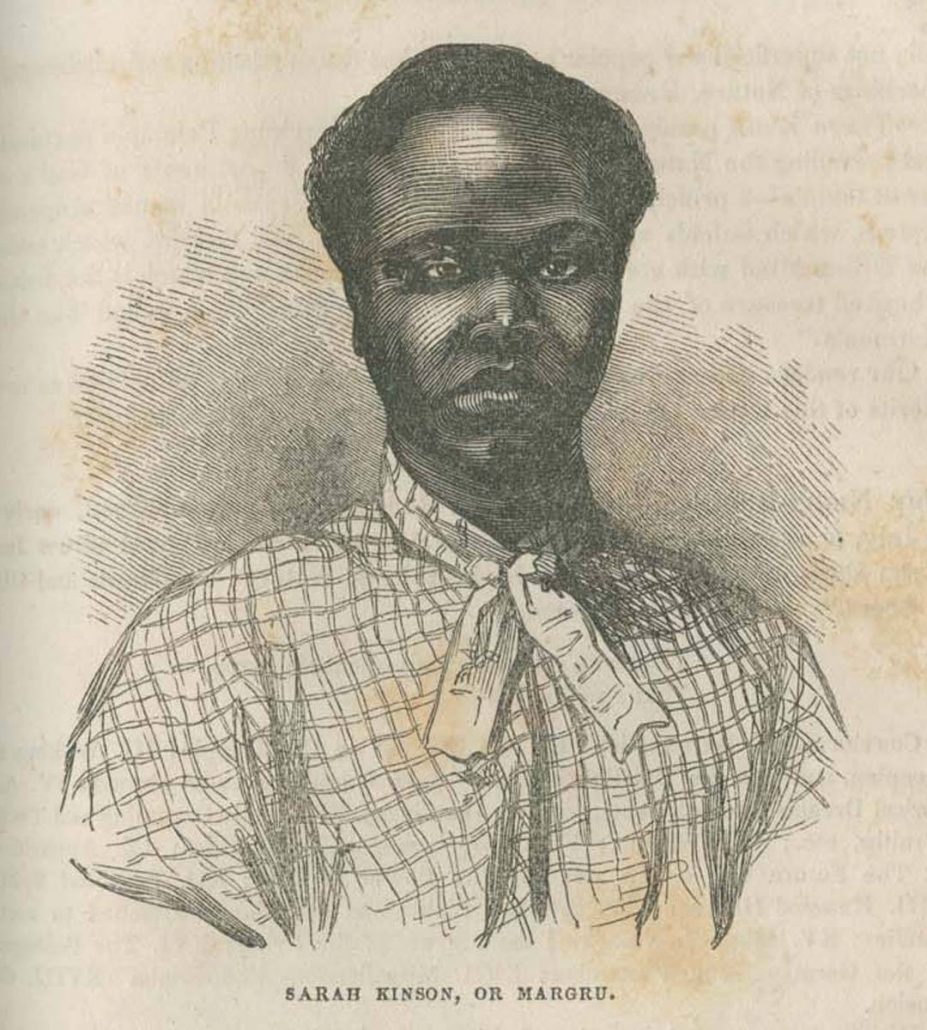Seminar Outline: Week 2
Green, Sarah Margru Kinson. In the American Phrenological Journal, vol. 12 (1850), 231. (New York: 1850).
Amos Gilbert. Memoir of Frances Wright (1855), frontispiece.
Green, Frances H. Memoirs of Elleanor Eldridge. (Providence: 1838).
Mott, Lucretia. In The liberty bell. (Boston, 1844), frontispiece.
Linnard, Anna Jane. In Baird, R. Memoir of Anna Jane Linnard. 2nd ed. (Philadelphia, 1837), frontispiece.
Abolition Hall: The evening before the conflagraton at the time more than 50,000 persons were glorifying in its destruction at Philadelphia May -1838. (Philadelphia: 1850). Drawn on stone by Zip Coon.
During the second week, participants will engage with aspects of the antebellum period that highlight the contradictions between declarations of independence and women’s dependence on men. As married women, free women could not own, buy, or sell property, make contracts, or conduct business in their own names. At the same time, virtually all women worked, whether as housewives, laborers, or slaves. Throughout the North, and visibly in Philadelphia, women ran businesses, taught school, gained employment, spoke out in Quaker meeting, and organized to end the consumption of alcohol, slavery, and capital punishment, as well as for their own rights. Readings will includes articles by Jeanne Boydston and Emma Lapsansky, excerpts from Thavolia Glymph’s Out of the House of Bondage and Susan Zaeske’s Signatures of Citizenship, and Lori Ginzberg’s Elizabeth Cady Stanton. Primary sources include addresses by striking tailoresses, debates about married women’s property rights, prescriptive literature directed to housewives, accounts of women’s enslavement, and reports of antislavery societies.
The Women’s Rights National Historic Park in Seneca Falls, New York, will be an important “source” for this investigation. As the only national park dedicated to women’s history and rights, this site tells the story of the convention for woman’s rights held in Seneca Falls in 1848, and includes the home of Elizabeth Cady Stanton, one of that convention’s leaders. Although we will not visit upstate New York, the second week will conclude with a deep investigation of the Park’s on-line materials, an important resource that will help teachers think about how to use historic sites, and websites, in their own classrooms.
Schedule and readings (preliminary)
Monday:
Marriage, Work, and Women’s Dependence
MORNING:
Jeanne Boydston, Home and Work: Housework, Wages, and the Ideology of Labor in the Early Republic (1990) (excerpts)
Jeanne Boydston, “The Woman Who Wasn’t There: Women’s Market Labor and the Transition to Capitalism in the United States,” Journal of the Early Republic 16.2 (1996): 183–206.
Christine Stansell, City of Women: Sex and Class in New York, 1790-1860 (1987) (excerpts)
AFTERNOON
Primary documents:
“Address of Sarah Monroe,” NY Daily Sentinel, Mar 3, 1831 and “An Address Delivered before the United Tailoresses Society” [Louise Mitchell], NY Daily Sentinel, June 25, 1831, in Nancy Cott, et al., Root of Bitterness (118-122)
Kezia Kendall to Simon Greenleaf, 1839, in Nancy Cott, et al., Root of Bitterness (128-131)
T.S. Arthur, “Sweethearts and Wives,” Godey’s Lady’s Book, Dec. 1841, in Nancy Cott, et al., Root of Bitterness (138-147)
Tuesday:
Laboring Women: Slave and Free
MORNING:
Thavolia Glymph, Out of the House of Bondage: The Transformation of the Plantation Household (2008) (excerpts)
Adrienne Davis, “Don’t let Nobody Bother Yo’ Principle: The Sexual Economy of American Slavery,” https://law.wustl.edu/faculty_profiles/documents/davis/The%20Sexual%20Economy%20of%20American%20Slavery.pdf
AFTERNOON:
Primary documents:
Harriet Jacobs, Incidents in the Life of a Slave Girl (excerpt)
James Curry’s account of his mother, in Nancy Cott, et al., Root of Bitterness, 239-242
Accounts by Mrs. James Seward, Mrs. Nancy Howard, Henry Gowens, Mrs. John Little all in Benjamin Drew, ed., A Northside View of Slavery: The Refugee, or the Narratives of Fugitive Slaves (1856) (in Nancy Cott, et al., Root of Bitterness, 252-257)
Wednesday:
Antislavery Activism
MORNING:
Susan Zaeske, Signatures of Citizenship: Petitioning, Antislavery, and Women’s Political Identity (2003) (excerpts)
Emma Jones Lapsansky, “Feminism, Freedom, and Community: Charlotte Forten and Women Activists in Nineteenth-century Philadelphia,” The Pennsylvania Magazine of History and Biography 113.1 (1989): 3–19
Julie Winch, “Sarah Forten’s Anti-Slavery Network,” in Kathryn Kish Sklar and James Brewer Stewart, eds., Women’s Rights and Transatlantic Antislavery in the Era of Emancipation (2007), 143-157
AFTERNOON:
Primary documents:
The Anti-Slavery Convention of American Women, Held in NYC, May 9-12, 1837, Proceedings
Angelina Grimke, “An Appeal to the Women of the Nominally Free States,” 1838
Charlotte Forten, The Journals of Charlotte Forten Grimke (excerpts)
Pennsylvania Hall, Selected Documents, newspaper articles
Address of the Boston Female Antislavery Society, 1836
Thursday:
Which Women’s Rights?
MORNING:
Lori Ginzberg, Elizabeth Cady Stanton: An American Life (2009)
Jane Rhodes, “At the Boundaries of Abolitionism, Feminism, and Black Nationalism: The Activism of Mary Ann Shadd Cary,” in Kathryn Kish Sklar and James Brewer Stewart, eds., Women’s Rights and Transatlantic Antislavery in the Era of Emancipation (2007), 346-366
AFTERNOON:
Primary documents:
Elizabeth Cady Stanton, “Manhood Suffrage,” The Revolution, Dec. 24, 1868, in Ann D. Gordon, ed., The Selected Papers of Elizabeth Cady Stanton and Susan B. Anthony v. 2, 194-199
Paulina Wright Davis, A History of the National Woman’s Rights Movement (1870)
Friday:
Historical Memory and Women’s rights
MORNING:
Lisa Tetrault, The Myth of Seneca Falls: Memory and the Women’s Suffrage Momement, 1848-1898 (2014) (excerpts)
AFTERNOON:
Discuss primary documents from the Seneca Falls Women’s Rights National Historical Park: http://www.nps.gov/wori/learn/index.htm
Any views, findings, conclusions, or recommendations expressed in this program do not necessarily represent those of the National Endowment for the Humanities.







